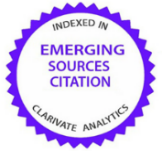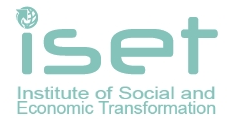Influence of information asymmetry on the assessment of a company’s solvency
Abstract
Introduction. The environment in which enterprises operate in the 21st century is becoming qualitatively different: the intensification of competition in a saturated market leads to an increase in the degree of uncertainty, and hence to the emergence of unpredictable factors. Because uncertainty is a source of risk, it should be minimized by obtaining quality, reliable, comprehensive information. In Ukraine, declaring asymmetric information is done in a completely opposite way than abroad: real property, revenue and profit, on the contrary to developed capitalist countries, are understated to minimize taxation. In both cases, such information asymmetry gives potential investors misconceptions about the solvency of a company and the efficiency of its activities.
Aim and tasks. To investigate how the presence of information asymmetry in the economic environment affects the assessment of the solvency of economic entities from the perspective of investors. The obtained conclusions will allow to determine what exactly needs to be done in the direction of further improvement of regulatory instruments of state policy in this area.
Research results. With the growth of information saturation of society and the greater extent of replication and interpretation of source information, it becomes easier to abuse, manipulate information, and to mislead people. Obstructing the rational behavior of economic entities and generating additional costs (information retrieval costs), the asymmetry of information leads to inefficient functioning, and also causes restrictions on competition. The main universal models of investor behavior in a market in the conditions of information asymmetry, which are actually aimed at the inevitability of unexpected and sharp reversals of market conditions (so-called "black swans"), are analyzed.
Conclusion. A company's financial statements contain information that should be interpreted as asymmetrically distributed information. Approaches based on methods of detecting and accounting for asymmetry in the annual reporting of companies are promising for remedying its negative impact. On the other hand, these approaches must also take into account the fact that in the XXI century, the functions of intermediaries are easily deformed, information technologies are ineffective, and the rules of rational behavior may lead to failure. Therefore, overcoming uncertainty and information asymmetry requires taking into account N. Taleb's approach to the existence of "black swans". Moreover, it is a demand of the present time: in early 2020, the whole world encountered one of these "black swans", namely the global COVID-19 outbreak.
Keywords:
crisis, uncertainty, financial reporting, information asymmetry, solvency.References
2. Asongu, S. A., Nwachukwu, J. C., & Tchamyou, V. S. (2016). Information asymmetry and financial development dynamics in Africa. Review of Development Finance, 6(2), 126-138.
3. Booth, P., & Morrison, A. D. (2007). Regulatory competition and life insurance solvency regulation in the European Union and United States. North American Actuarial Journal, 11(4), 23-41.
4. George A. Akerlof. The Market for «Lemons»: Quality Uncertainty and the Market Mechanism. The Quarterly Journal of Economics, v.84, August 1970, p.488-500.
5. Fusaro, P. C., & Miller, R. M. (2002). What went wrong at Enron: Everyone's guide to the largest bankruptcy in US history. John Wiley & Sons.
6. Fulghieri P., Garcia D. and Hackbarth D. Asymmetric Information and the Pecking (Dis) Order. 2013. Retrieved from: http://public.kenan-flagler.unc.edu
7. Kahneman D. Thinking Fast and Slow. New York, 2011. 499 p.
8. Löfgren, K. G., Persson, T., & Weibull, J. W. (2002). Markets with asymmetric information: the contributions of George Akerlof, Michael Spence and Joseph Stiglitz. The Scandinavian Journal of Economics, 104(2), 195-211.
9. Markowitz, H. (1952). Portfolio Selection. The Journal of Finance, 7(1), 77-91.
10. Nagar, V., Schoenfeld, J., & Wellman, L. (2019). The effect of economic policy uncertainty on investor information asymmetry and management disclosures. Journal of Accounting and Economics, 67(1), 36-57.
11. Petersen, C., & Plenborg, T. (2006). Voluntary disclosure and information asymmetry in Denmark. Journal of International Accounting, Auditing and Taxation, 15(2), 127-149.
12. Saxton, G. D. & Anker, A. E. (2013). The Aggregate Effects of Decentralized Knowledge Production: Financial Bloggers and Information Asymmetries in the Stock Market. Journal of Communication, 63(6),1054-1069.
13. Sharpe, W.S., & Litterman, R. (2014). Past, Present, and Future Financial Thinking. Financial Analysts Journal, 70(6), 16-22.
14. Silver, N. (2012). The Signal and the Noise. Why so Many Predictions Fall – but Some don’t. New York.
15. Reuters (2015). Swiss Franc Shock Shuts Some FX Brokers; Regulators Move in. Reuters. London. Retrieved from: http:// www.reuters.com
16. Taleb, N. (2005). Fooled by randomness: The hidden role of chance in life and in the markets (Vol. 1). Random House Incorporated.
17. Taleb, N. N. (2007). The black swan: The impact of the highly improbable (Vol. 2). Random house.
18. Womack, B. (2016). Asymmetry and International Relationships. New York: Cambridge University Press.
19. Yeo, H. (2016). Solvency and liquidity in shipping companies. The Asian Journal of Shipping and Logistics, 32(4), 235-241.
20. Koval, V., Duginets, G., Plekhanova, O., Antonov, A., & Petrova, M. (2019). On the supranational and national level of global value chain management. Entrepreneurship and Sustainability Issues, 6(4), 1922-1937. http://doi.org/10.9770/jesi.2019.6.4(27)

This work is licensed under a Creative Commons Attribution-NonCommercial 4.0 International License.
If the article is accepted for publication in the journal «Economics. Ecology. Socium» the author must sign an agreementon transfer of copyright. The agreement is sent to the postal (original) or e-mail address (scanned copy) of the journal editions.





















